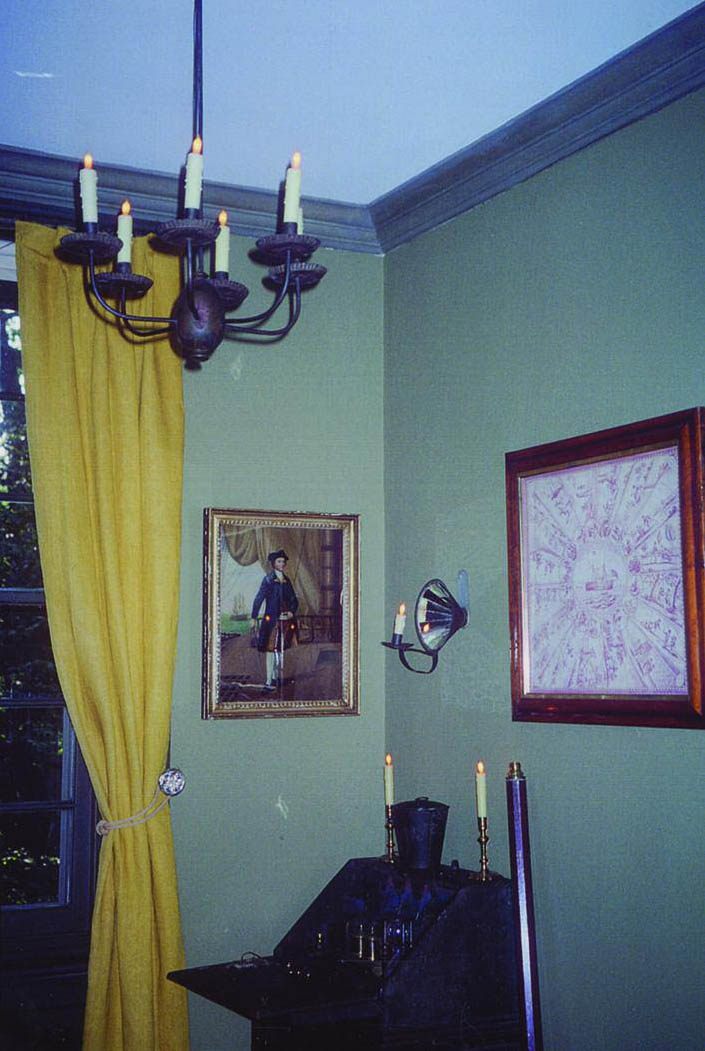THE DE-ELECTRIFICATION AND RE-ELECTRIFICATION OF HISTORIC LIGHTING FIXTURES AT WINTERTHUR MUSEUMBEVERLY N. PERKINS
1 INTRODUCTIONWinterthur Museum upgraded all the electrical systems in the museum building. The electrical systems were aging, and, as they were installed over many decades, there was a lack of cohesion and uniformity among them. This large project offered an opportunity for the Conservation Department to carry out conservation treatments on many objects in the collections. Rooms were cleared of all collections materials before the electricians began work on the in-wall wiring. Because they are accessioned collection objects, all the historic lighting fixtures came through the conservation laboratory for examination, treatment, and, when necessary, re-electrification. A team consisting of a conservator, a conservation assistant, two technicians, and numerous interns concentrated their efforts solely on the treatment of the lighting fixtures. The treatment of the historic lighting fixtures took the better part of two years. Winterthur's collection contains more than 1,000 historic lighting fixtures. The collection consists of 17th-, 18th-, and 19th-century fixtures such as silver oil lamps, wooden candlestands, silver candlesticks, brass chandeliers, ceramic candelabra, painted iron lanterns, and iron and brass candlestands. A museum report explains that Henry Francis du Pont included lighting fixtures in his collection because of their historic importance and beauty and for the effect their light would add to the period atmosphere in the rooms (fig. 1, see page 449). In the 1920s he was attempting to replicate the appearance of natural candlelight in his own home by using electric bulbs that simulated flames. The use of electric candles in historic lighting fixtures was introduced into the rooms at Winterthur in 1929 when du Pont inherited the Winterthur house (Lamden and Kirschner 1995).
The electrification of lighting fixtures continued over the decades as du Pont built his collection. Some of the lighting fixtures were modified so that the electrical wires could be more easily hidden. Du Pont purchased some fixtures that were already modified for electricity. Other fixtures were electrified, at the request of du Pont, by his staff. Although it would not be within Winterthur's current policy to electrify an object that had not already been used as a source for lighting the collection, some of the objects were re-electrified in order to maintain du Pont's vision. An important aspect of the project was re-electrifying objects in a manner that would be unobtrusive, safe for the object, and safe in terms of electrical systems. Although the conservation treatments on the objects were varied and at times complex, they followed current standard practices and will not be presented in this paper. This project would not have succeeded without the team that was formed by the directors of three different divisions: Chief Conservator Gregory Landrey, Plant Engineer and Director of Facilities Services Michael S. Dixon, and Exhibitions Division Director Felice Jo Lamden. The three directors designed the timeline for the project, integrating the conservation component into the rewiring and lighting projects taking place simultaneously. The team of directors designed the budget for staffing, materials, and space renovations. By meeting regularly with relevant staff throughout the project, the team of directors facilitated the movement of objects and solved logistical problems. This team, along with Curator Donald Fennimore, carried out research on electric candles, even traveling to other venues to see lighting systems in place. |
